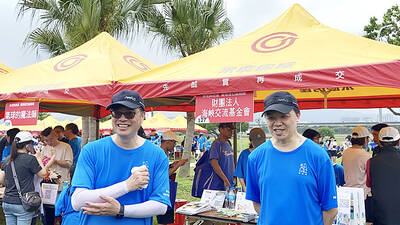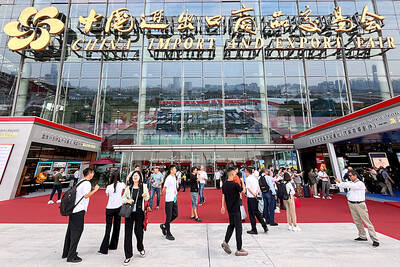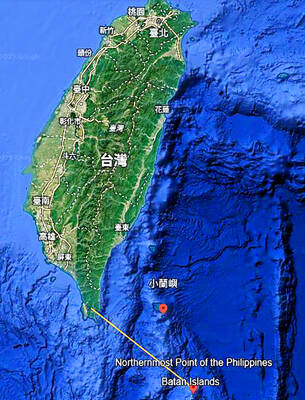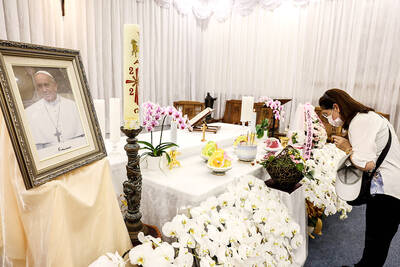Singapore Airlines Ltd, the sixth-worst performing stock in Singapore last year, may have an even rougher ride this year. Competition from a slew of startup carriers and the potential for another SARS outbreak are making investors wary of Southeast Asia's biggest airline.
Singapore Airlines and its regional unit SilkAir Pte already battle cheaper fares offered by Jakarta-based Lion Air and Malaysia's AirAsia Sdn. From this year, Singapore Airlines will compete with Singapore-based Valuair Ltd and even its own Tiger Airways, a discount airline it's setting up with Indigo Partners LLC and Irelandia Investments Ltd.
"The main overhang on Singapore Air's performance has been the low-cost carriers and what they're going to do," said Caleb Woo, who holds Singapore Airlines shares in the US$1.4 billion he helps oversee at DBS Asset Management Ltd in Singapore. "There are a lot of people who are attracted by cheaper fares. There will be some detrimental impact."
Singapore Airlines, 57 percent-owned by the government, trimmed wages and fired almost 600 workers last year, the biggest job cuts in its history.
Still, questions about whether Singapore is doing enough to remain an aviation hub were raised this month by Lee Kuan Yew (
The airline and Changi airport must cut costs "by 10 to 15 percent," Lee said in an interview with Channel NewsAsia, a unit of state-owned MediaCorp, the city's biggest broadcaster.
"If we don't have that discipline or the resolve or the wit to think of new strategies, new ways to overcome the competition, then we deserve to be sidelined," said Lee, who remains a Cabinet minister.
Investors, though, remain concerned that SARS will make a comeback, pushing tourists and business executives to curb travel and forcing airlines to scrap flights.
Forced to cut capacity by about a third, the carrier had its first-ever loss in the three months to June 30.
Singapore Airlines faces further pressure from the low-cost carriers.
Malaysia's AirAsia plans this year to start flying from Singapore, and Lion Air sells return trips from the city-state to Jakarta in Indonesia at a third of Singapore Airline's fare.
AirAsia, in a tilt at its rival's famous "Singapore Girl" advertising campaign, last month ran a full-page ad in Singapore's Streats newspaper, boasting, "There's a new girl in town. She's twice the fun and half the price."
Budget carriers are likely to win about a 4 percent share of air travel within Asia this year, said Kevin O'Connor, head of transport research at CLSA Asia Pacific Markets in Hong Kong.
"You've gone from two to five" carriers, said O'Connor. "You don't have to be very good at math to work out that's a huge increase in competition."
Things could get tougher. Richard Branson's Virgin Blue Holdings Ltd, which has gained 30 percent of Australia's domestic market, also wants to start a budget carrier in Asia, as does Thai Airways International Pcl.
Singapore Airlines is trying to stay above the fray.
"While we have an interest in the low-cost market and want to be part of its development, our focus is on being a real six-star carrier at the premium end of the market," the company said in a statement.

SECURITY: As China is ‘reshaping’ Hong Kong’s population, Taiwan must raise the eligibility threshold for applications from Hong Kongers, Chiu Chui-cheng said When Hong Kong and Macau citizens apply for residency in Taiwan, it would be under a new category that includes a “national security observation period,” Mainland Affairs Council (MAC) Minister Chiu Chui-cheng (邱垂正) said yesterday. President William Lai (賴清德) on March 13 announced 17 strategies to counter China’s aggression toward Taiwan, including incorporating national security considerations into the review process for residency applications from Hong Kong and Macau citizens. The situation in Hong Kong is constantly changing, Chiu said to media yesterday on the sidelines of the Taipei Technology Run hosted by the Taipei Neihu Technology Park Development Association. With

CARROT AND STICK: While unrelenting in its military threats, China attracted nearly 40,000 Taiwanese to over 400 business events last year Nearly 40,000 Taiwanese last year joined industry events in China, such as conferences and trade fairs, supported by the Chinese government, a study showed yesterday, as Beijing ramps up a charm offensive toward Taipei alongside military pressure. China has long taken a carrot-and-stick approach to Taiwan, threatening it with the prospect of military action while reaching out to those it believes are amenable to Beijing’s point of view. Taiwanese security officials are wary of what they see as Beijing’s influence campaigns to sway public opinion after Taipei and Beijing gradually resumed travel links halted by the COVID-19 pandemic, but the scale of

A US Marine Corps regiment equipped with Naval Strike Missiles (NSM) is set to participate in the upcoming Balikatan 25 exercise in the Luzon Strait, marking the system’s first-ever deployment in the Philippines. US and Philippine officials have separately confirmed that the Navy Marine Expeditionary Ship Interdiction System (NMESIS) — the mobile launch platform for the Naval Strike Missile — would take part in the joint exercise. The missiles are being deployed to “a strategic first island chain chokepoint” in the waters between Taiwan proper and the Philippines, US-based Naval News reported. “The Luzon Strait and Bashi Channel represent a critical access

Pope Francis is be laid to rest on Saturday after lying in state for three days in St Peter’s Basilica, where the faithful are expected to flock to pay their respects to history’s first Latin American pontiff. The cardinals met yesterday in the Vatican’s synod hall to chart the next steps before a conclave begins to choose Francis’ successor, as condolences poured in from around the world. According to current norms, the conclave must begin between May 5 and 10. The cardinals set the funeral for Saturday at 10am in St Peter’s Square, to be celebrated by the dean of the College